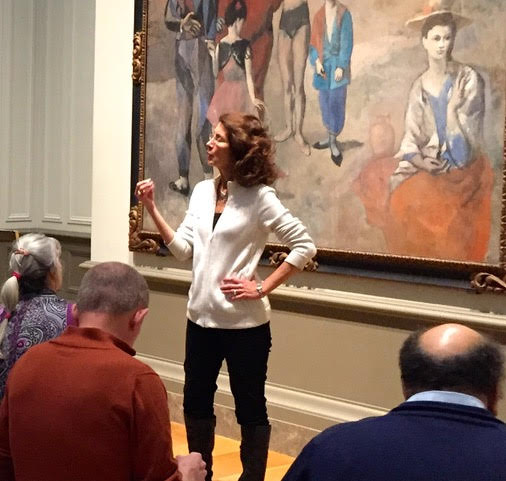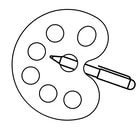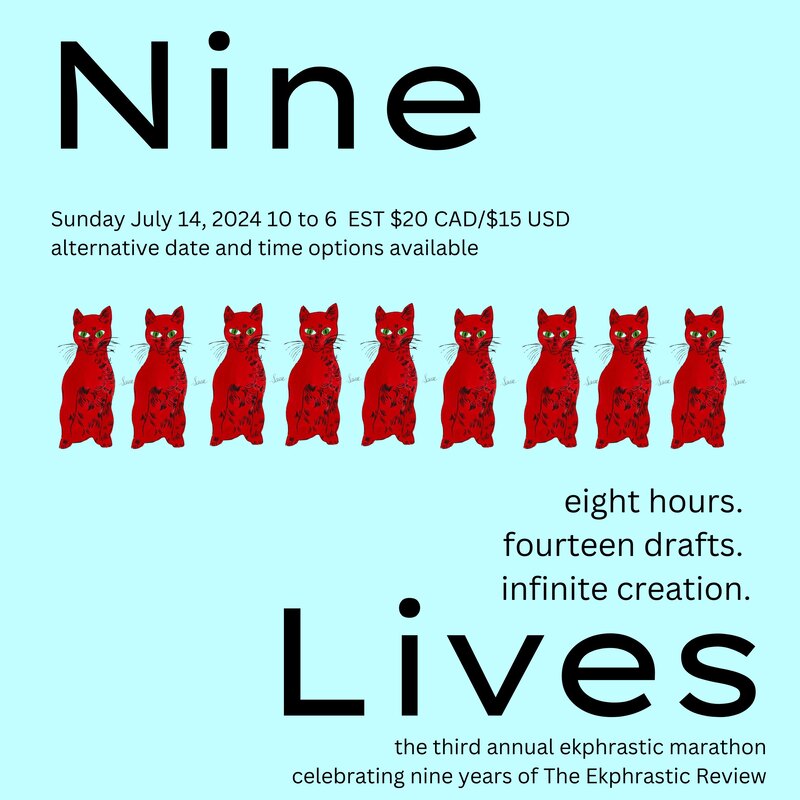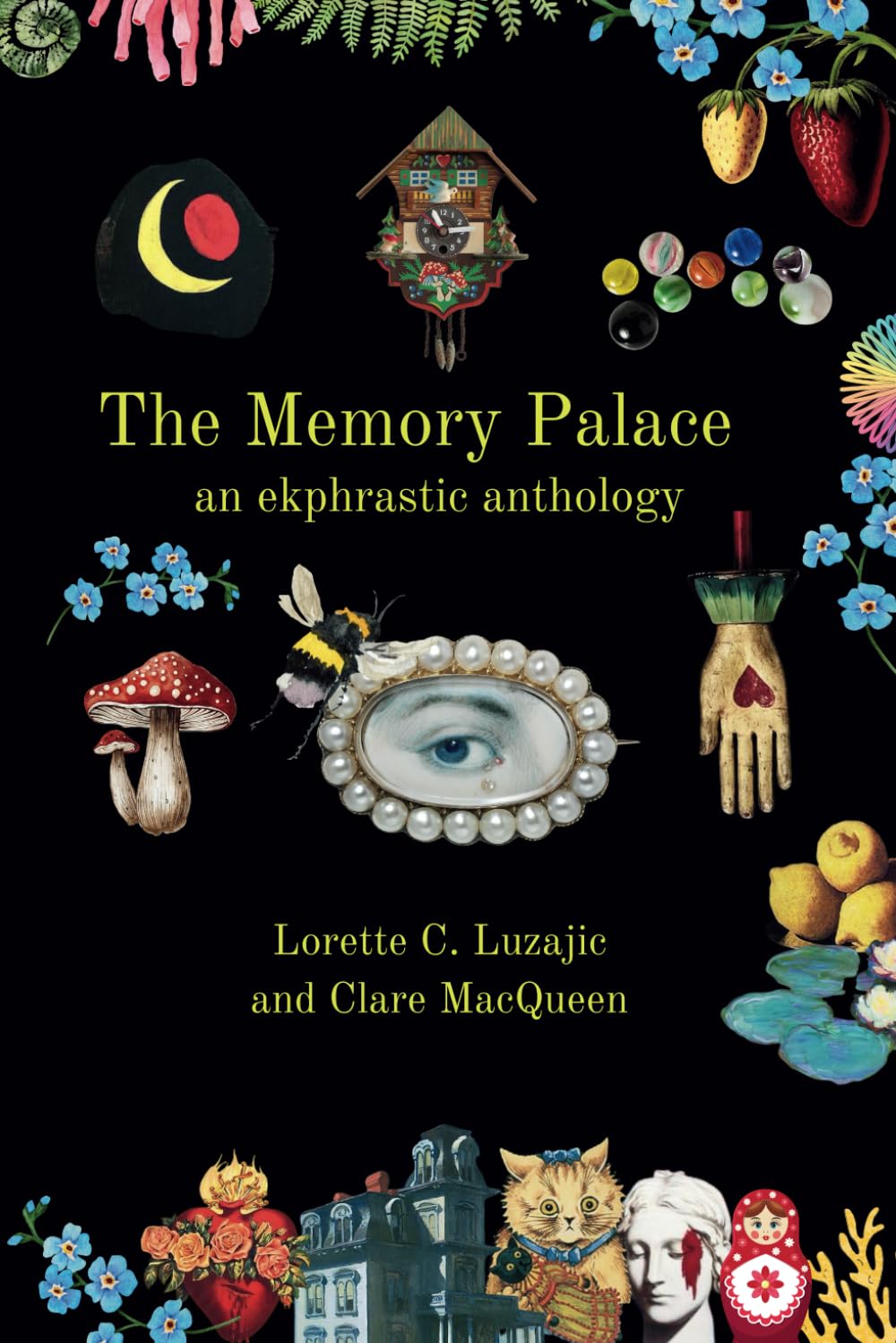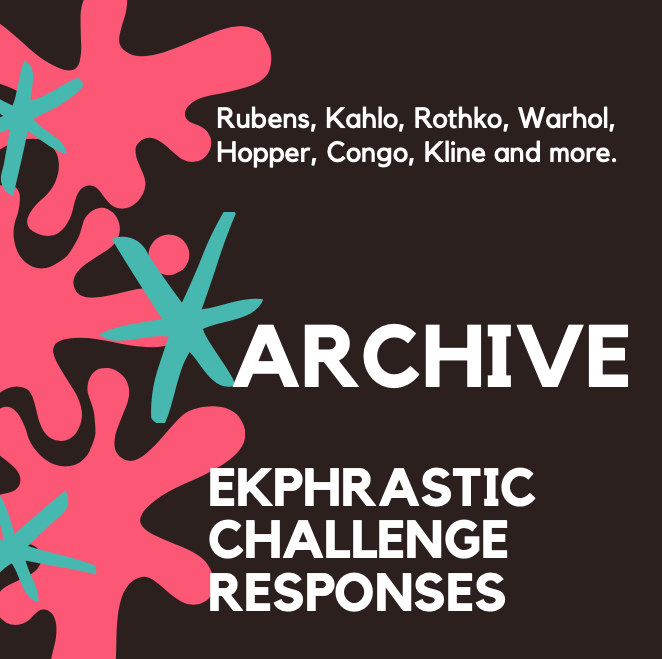|
We recently met Mary Hall Surface when she attended one of our online writing workshops here at The Ekphrastic Review. I recognised her name as a teacher from the Smithsonian series of art history online, where she teaches ekphrastic writing. Mary Hall was kind enough to join us in an interview about her ekphrastic teaching and work. The Ekphrastic Review: How did you discover the joy of ekphrastic writing? Mary Hall Surface: I created a multi-media solo performance inspired by the work of the American artist Alexander Calder, which launched my interest in writing plays inspired by art. That project was followed by two plays based on the entire body of work of an artist, first Edward Hopper and then Roy Lichtenstein. My other three ekphrastic plays are inspired by a single work of art (Portrait of my Grandmother by Archibald Motley, Jr. and The Shaw 54th Regiment Memorial by August Saint-Gaudens) and by an innovation within an artist’s practice (the cut outs of Henri Matisse.) In 2015, the National Gallery of Art in Washington, DC, which had produced three of my art-inspired plays, invited me to launch a public program called “Writing Salon.” The in-museum sessions were devoted to approaching art as an inspiration for creative writing and embracing writing to deepen connection to visual art. Envisioning, researching, and scaffolding the writing prompts for these 2 – 3 hour workshops completely captivated my imagination. Now I centre virtually all my teaching artist work on my life-long love, visual arts, as inspiration, whether focused on the craft of writing, on reflection, or on strengthening empathy. In what ways does art history enrich our lives as writers or as readers? Exploring art through the ages engages us with how humans have responded to being alive. Art history, which is an ever-unfolding conversation across centuries and cultures, is shaped by essential questions: How and why do we capture what we see and experience? On what do we place meaning? What do we celebrate as beautiful? These questions are central to a writer’s practice, too, no matter our genre. So, art gives writers another medium through which they can question, wonder, wrestle, and perhaps even discover what matters most to them. Moreover, experiencing how artists choose their visual vocabularies (their colors, lines, shapes, tones, compositions) offers an enriching parallel for writers to consider the choices we make as writers. How do you compose the colors, shapes and tones of a sentence, a paragraph, a story? What’s the best way for someone new to the concept of ekphrasis to approach an artwork? I begin all my workshops with taking a close, slow look at the work of art. I ask you to hold back that overwhelming human urge to immediately know or assign meaning or spin a story about the work of art. Rather, I am eager for writers to first take in all the visual information, so that they will have the largest possible imaginative canvas from which to work. After taking that close look, I suggest you begin to wonder; that is, to ask big questions about the work, questions without one answer. Our wonders fuel our writing. Then follow a wonder into a description, or a story, or a poem or… so many possibilities. What are some of your favourite kinds of art or artists for ekphrastic writing? Why? I design my creative writing workshops to focus on specific aspects of writing which I pair with a work of art. Obvious choices include portraits to explore character and landscapes to explore setting. But a key to my workshop process is that I often use the lens of the artist’s life and times to shape the prompts. For example, when working with Edward Hopper’s People in the Sun for a workshop devoted to multi-layered narratives, we looked through the lens of Hopper’s fascination with travel to imagine the journeys, both literal and metaphorical, of each of the figures. We then looked through the lens of Hopper’s love of the cinema to imagine what movie of their life a figure might be watching. How does teaching ekphrastic writing for a museum compare and contrast with independent workshops or teaching elsewhere? Does the experience or audience change, and if so, how? I will admit to still being starstruck when I stand beside a work of art in a museum to teach. The participants seem to share in the pleasure and power of being in the presence of the painting or sculpture, which lifts the whole writing experience. But until the time comes to return in-person, I try to convey that heightened experience online whether working through museums, with educators, or presenting workshops independently for a diverse audience. Happily, I have found that some participants thrive in the online setting. Particularly in a reflective writing workshop, some writers go to a deeper place in the comfort of their own desk. Mary Hall Surface is an award-winning playwright, theatre director and teaching artist who leads creative writing and reflective writing workshops inspired by visual art. She works as a National Kennedy Center Teaching artist and was a six-summer faculty member at Harvard’s Project Zero Classroom. She currently teaches online through Washington DC’s Smithsonian Associates, National Gallery of Art and more. www.maryhallsurface.com.
1 Comment
2/4/2022 04:00:49 pm
Thank you so much! I truly enjoyed having the opportunity to process my own practice. I look forward to continuing to follow the Ekphrastic Journal with interest.
Reply
Your comment will be posted after it is approved.
Leave a Reply. |
The Ekphrastic Review
COOKIES/PRIVACY
This site uses cookies to deliver your best navigation experience this time and next. Continuing here means you consent to cookies. Thank you. Join us on Facebook:
July 2024
|
